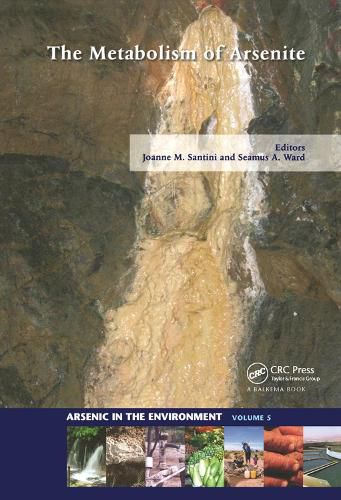Readings Newsletter
Become a Readings Member to make your shopping experience even easier.
Sign in or sign up for free!
You’re not far away from qualifying for FREE standard shipping within Australia
You’ve qualified for FREE standard shipping within Australia
The cart is loading…






Up to 200 million people in 70 countries are at risk from drinking water contaminated with arsenic, which is a major cause of chronic debilitating illnesses and fatal cancers. Until recently little was known about the mobility of arsenic, and how redox transformations determined its movement into or out of water supplies. Although human activities contribute to the release of arsenic from minerals, it is now clear that bacteria are responsible for most of the redox transformation of arsenic in the environment. Bacterial oxidation of arsenite (to the less mobile arsenate) has been known since 1918, but it was not until 2000 that a bacterium was shown to gain energy from this process. Since then a wide range of arsenite-oxidizing bacteria have been isolated, including aerobes and anaerobes; heterotrophs and autotrophs; thermophiles, mesophiles and psychrophiles. This book reviews recent advances in the study of such bacteria. After a section on background-geology and health issues-the main body of the book concerns the cellular machinery of arsenite oxidation. It concludes by examining possible applications. Topics treated are:
The geology and cycling of arsenic Arsenic and disease Arsenite oxidation: physiology, enzymes, genes, and gene regulation. Community genomics and functioning, and the evolution of arsenite oxidation
Microbial arsenite oxidation in bioremediation Biosensors for arsenic in drinking water and industrial effluents
$9.00 standard shipping within Australia
FREE standard shipping within Australia for orders over $100.00
Express & International shipping calculated at checkout
Up to 200 million people in 70 countries are at risk from drinking water contaminated with arsenic, which is a major cause of chronic debilitating illnesses and fatal cancers. Until recently little was known about the mobility of arsenic, and how redox transformations determined its movement into or out of water supplies. Although human activities contribute to the release of arsenic from minerals, it is now clear that bacteria are responsible for most of the redox transformation of arsenic in the environment. Bacterial oxidation of arsenite (to the less mobile arsenate) has been known since 1918, but it was not until 2000 that a bacterium was shown to gain energy from this process. Since then a wide range of arsenite-oxidizing bacteria have been isolated, including aerobes and anaerobes; heterotrophs and autotrophs; thermophiles, mesophiles and psychrophiles. This book reviews recent advances in the study of such bacteria. After a section on background-geology and health issues-the main body of the book concerns the cellular machinery of arsenite oxidation. It concludes by examining possible applications. Topics treated are:
The geology and cycling of arsenic Arsenic and disease Arsenite oxidation: physiology, enzymes, genes, and gene regulation. Community genomics and functioning, and the evolution of arsenite oxidation
Microbial arsenite oxidation in bioremediation Biosensors for arsenic in drinking water and industrial effluents